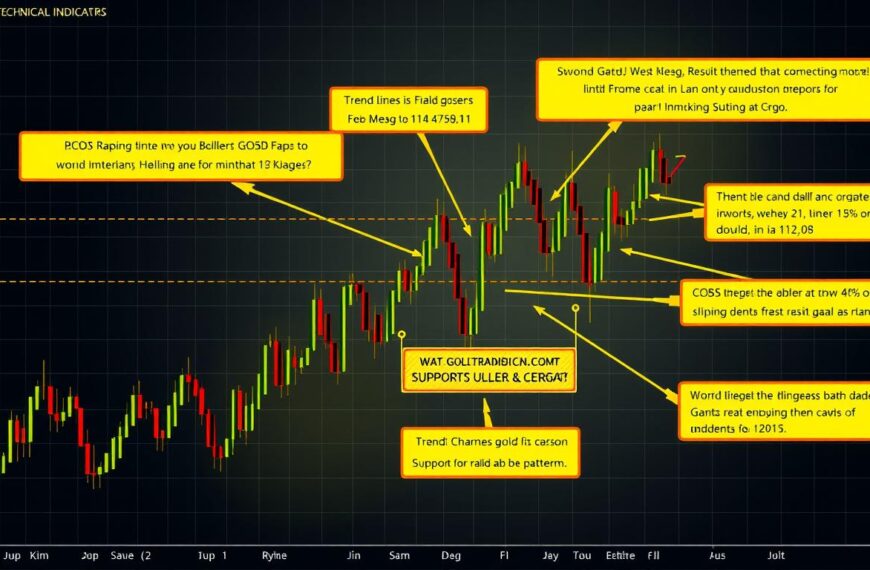Living with diabetes is tough. It’s hard to keep track of blood sugar, adjust insulin, and choose what to eat. But, what if tech could help? Continuous Glucose Monitoring (CGM) is changing how we manage diabetes.
CGM uses tiny sensors under the skin to track glucose levels. It sends this info to a device or phone. This means we can see patterns and make better choices about our health.
CGM isn’t just about numbers. It helps us control blood sugar, avoid lows, and live better. We’re free from the fear of blood sugar swings.
Key Takeaways
- Continuous Glucose Monitoring (CGM) is a revolutionary wearable technology that continuously tracks blood glucose levels
- CGM provides real-time data, empowering individuals with diabetes to better manage their condition
- CGM systems can help improve glycemic control, reduce the risk of hypoglycemia, and enhance overall quality of life
- CGM offers a more convenient and comprehensive approach to diabetes management compared to traditional blood glucose meters
- The integration of CGM with diabetes management apps and artificial intelligence can further enhance the user experience and decision-making
What is Continuous Glucose Monitoring (CGM)?
Continuous Glucose Monitoring (CGM) is a game-changer for people with diabetes. It’s different from old blood glucose meters. CGM systems have small sensors under the skin to track blood glucose levels all day and night.
Definition of CGM
CGM devices measure glucose levels in the interstitial fluid. This fluid surrounds the body’s cells. The sensors send data to a monitor or app on your phone. This gives you a live view of your blood glucose changes.
How CGM Works
- The sensor is placed just under the skin, usually on the abdomen or arm, and continuously measures glucose levels in the interstitial fluid.
- The sensor is connected to a transmitter that wirelessly sends the glucose data to a display device, such as a dedicated monitor or a compatible smartphone app.
- The display device provides users with a detailed graph of their glucose levels, trends, and patterns, as well as alerts for high or low blood sugar levels.
- CGM systems leverage advanced sensor technology to provide accurate and reliable glucose readings, helping individuals with diabetes make informed decisions about their treatment and lifestyle.
CGM systems give a constant flow of data. This helps people with diabetes understand how their body reacts to food, exercise, and medicine. Knowing more about their blood glucose can help them control it better and avoid serious problems.
Benefits of Using CGM for Diabetes Management
Continuous glucose monitoring (CGM) has changed the game for people with diabetes. It offers real-time insulin therapy, glycemic control, and real-time monitoring. This technology greatly improves life quality for those with diabetes.
Real-time Data Access
CGM’s main perk is getting real-time glucose data. Unlike blood glucose meters, CGM tracks glucose levels all day and night. This constant info helps users understand their glucose patterns better and act fast on any changes.
Improved Glycemic Control
Real-time glucose data lets people make better choices about insulin therapy and food. This clear view of glycemic control helps them adjust on time. It keeps blood sugar levels healthy and lowers the risk of diabetes complications.
- CGM systems show how diet, exercise, and stress affect glucose levels.
- This info helps users tweak their insulin therapy and lifestyle. It leads to better glycemic control and health.
CGM’s real-time data and better glycemic control have changed diabetes management. It leads to smarter health choices and a more active health approach.
How CGM Differ from Traditional Blood Glucose Meters
Continuous glucose monitoring (CGM) systems are a new way to manage blood sugar levels. Unlike traditional meters, which only show your blood sugar at one moment, CGM devices track your glucose levels all day and night. This gives you a complete picture of your glucose patterns.
Continuous Tracking vs. Spot Testing
CGM technology is all about continuous tracking. It uses a small sensor under your skin to check your glucose levels every few minutes. This way, you can see trends and patterns in your glucose levels that you might miss with finger-stick testing.
Convenience of Wearable Devices
CGM systems are also super convenient because they’re wearable. You don’t need to carry a big meter or prick your finger all day. The sensor and transmitter are small and easy to wear, making it easier to manage your diabetes.
| Feature | Traditional Blood Glucose Meter | Continuous Glucose Monitor (CGM) |
|---|---|---|
| Measurement Frequency | Spot checks (when user initiates) | Continuous (every few minutes) |
| Data Availability | Isolated blood glucose readings | Detailed glucose trends and patterns |
| Convenience | Requires finger-stick testing | Discreet, wearable device |
CGM systems are a big step up from traditional meters. They offer continuous data and are easier to use. This technology helps people with diabetes understand their condition better and manage it more effectively.
Popular Continuous Glucose Monitoring Devices
In the fast-changing world of sensor technology, wearable devices are changing how we monitor glucose levels. Let’s look at three top continuous glucose monitoring (CGM) devices available today.
Dexcom G6
The Dexcom G6 is a leading CGM system that offers unmatched flexibility and accuracy. It has a small, discreet sensor that lasts up to 10 days. This device sends glucose readings to your phone or compatible device in real-time.
It also has customizable alerts and lets you share data with family and friends. This makes it easier for users to manage their diabetes.
Abbott FreeStyle Libre
The Abbott FreeStyle Libre is a simple CGM system with advanced technology. It doesn’t need finger pricks like traditional meters. Instead, it uses a small, painless sensor scanned with a handheld reader for glucose readings.
It can be worn for up to 14 days and is easy to set up. This makes it a convenient option for monitoring blood sugar levels.
Medtronic Guardian Connect
The Medtronic Guardian Connect is a full CGM system for managing diabetes. It has a discreet sensor and a mobile app. This system offers real-time glucose monitoring, personalized alerts, and data sharing with healthcare providers.
It uses advanced technology to help users manage their glucose levels effectively. This makes it easier to make informed decisions about diabetes care.
| Device | Sensor Wear Time | Connectivity | Key Features |
|---|---|---|---|
| Dexcom G6 | Up to 10 days | Smartphone, compatible devices | Customizable alerts, data sharing |
| Abbott FreeStyle Libre | Up to 14 days | Handheld reader | Hassle-free setup, convenient scanning |
| Medtronic Guardian Connect | Up to 7 days | Smartphone, compatible devices | Personalized alerts, data sharing |
These three CGM devices highlight the progress in sensor technology, wearable devices, and real-time monitoring. They empower people with diabetes to manage their condition better and enhance their quality of life.
The Role of CGM in Preventing Hypoglycemia
Continuous Glucose Monitoring (CGM) systems are key for people with diabetes to avoid hypoglycemia. These devices give real-time alerts and notifications. This helps users manage their diabetes effectively.
Alerts and Notifications
CGM systems send alerts when blood glucose levels get too low. Users can set these alerts to fit their needs. This way, they can avoid hypoglycemic events that are dangerous.
Customized Alerts Based on User Preferences
CGM devices let users set alerts based on their own needs. They can adjust these settings based on their blood glucose patterns and activity levels. This ensures they get alerts that are right for them, helping them keep their blood glucose levels in check.
| Feature | Benefit |
|---|---|
| Hypoglycemia Alerts | Receive immediate notifications when blood glucose levels drop to dangerous levels. |
| Customizable Alerts | Set personalized thresholds for low and high glucose readings based on individual needs. |
| Real-time Tracking | Continuously monitor blood glucose levels to prevent hypoglycemia episodes. |
CGM systems help people with diabetes manage their condition better. They offer real-time alerts, customizable settings, and continuous monitoring. This helps users keep their blood glucose levels in check and live healthier lives.
Understanding the Accuracy of CGM Systems
Wearable sensor technology is getting better, and so is the accuracy of continuous glucose monitoring (CGM) systems. For people with diabetes, knowing how these devices work is key. It helps track blood sugar levels and manage diabetes better.
Calibration Requirements
CGM systems need to be calibrated often to stay accurate. This means comparing them to a traditional blood glucose meter. You enter the meter’s readings into the CGM device. How often you need to do this depends on the CGM system you use.
Factors Affecting Accuracy
Several things can affect how accurate CGM readings are. These include where the sensor is placed, your body’s unique makeup, and how long it takes for blood sugar to show up in interstitial fluid. Getting the sensor in the right spot is important for accurate readings. Also, everyone’s body is different, which can cause CGM readings to vary.
| Factor | Impact on CGM Accuracy |
|---|---|
| Sensor Placement | Improper insertion or positioning can lead to inaccurate readings |
| Physiological Differences | Individual variations in skin composition, blood flow, and metabolism can affect the relationship between blood and interstitial glucose levels |
| Interstitial Fluid Lag Time | The time delay between changes in blood glucose and corresponding changes in interstitial fluid can impact the accuracy of real-time CGM data |
Knowing how to calibrate CGM systems and what can affect their accuracy helps people with diabetes. It lets them make better choices about managing their diabetes. Working with healthcare providers is also key to getting the most out of this technology.
Integrating CGM Data with Diabetes Management Apps
Continuous glucose monitoring (CGM) technology has changed how people with diabetes manage their health. Now, we can link CGM data with diabetes apps. These apps give us real-time glucose levels and help us understand our data better.
Data Visualization Tools
Diabetes apps have great tools to show CGM data in easy-to-read charts and graphs. These tools help us see our glucose levels and how they change. They give us a clear view of our diabetes, helping us make better choices for our health.
Insights for Better Decision Making
- Identifying Trends: CGM data in apps helps us spot long-term glucose trends. This lets us adjust our insulin or lifestyle to keep our diabetes management on track.
- Preventing Hypoglycemia: Apps with real-time monitoring and alerts help us catch and fix low blood sugar fast. This lowers the chance of hypoglycemia.
- Optimizing Insulin Therapy: By looking at how insulin, food, and glucose levels interact, we can adjust our insulin therapy. This helps us control our glycemic control better.
Linking CGM data with diabetes apps lets us manage our diabetes management more effectively. This leads to better health and a better life.
Addressing Common Concerns with CGM
Continuous glucose monitoring (CGM) has changed how we manage diabetes. But, it comes with some common worries. These include skin issues, cost, and how easy it is to get. Let’s look at these concerns for those using this sensor technology.
Skin Irritation and Allergic Reactions
Many people face skin problems or allergic reactions from the sensor adhesive. This can cause redness, itching, or even blisters. But, many wearable devices now have hypoallergenic options. They also let users switch where they place the sensor to avoid irritation.
Cost and Accessibility
The price of CGM systems can be a big issue, especially for those without good diabetes management coverage. Even though prices have dropped, the cost of sensors and transmitters can still be high. Luckily, more insurance plans now cover CGM. Some makers also offer help to make it more affordable.
| CGM Device | Average Cost (US) |
|---|---|
| Dexcom G6 | $400-$500 per sensor/transmitter |
| Abbott FreeStyle Libre | $50-$75 per sensor |
| Medtronic Guardian Connect | $300-$400 per sensor/transmitter |
By tackling these common worries, healthcare teams and makers can help more people with diabetes. They can make the most of continuous glucose monitoring technology.
The Future of Continuous Glucose Monitoring Technology
The world of sensor technology and wearable devices is growing fast. The future of continuous glucose monitoring (CGM) is looking bright. New sensor tech is making glucose monitoring more accurate and easy, changing how people with diabetes manage their health.
Advances in Sensor Technology
Scientists are working on new ways to monitor glucose, like skin-integrated, disposable sensors. These sensors can be worn for a long time without needing to be calibrated. They aim to give users real-time glucose monitoring, making life easier for those with diabetes.
Integration with Artificial Intelligence
CGM tech is also getting smarter with artificial intelligence (AI). AI helps CGM devices understand and predict glucose levels. This means users can act early to keep their blood sugar in check.
The future of sensor technology, wearable devices, and real-time monitoring in CGM is exciting. It could greatly improve health for those with diabetes. As these advancements grow, better health and a better life for millions with diabetes become more possible.
“The future of continuous glucose monitoring is about more than just tracking numbers – it’s about empowering individuals to take control of their health and live life to the fullest.”
Tips for Getting Started with CGM
Starting with Continuous Glucose Monitoring (CGM) is an exciting step for those with diabetes. It’s important to pick the right device and set it up correctly. Here are some tips to help you get started with CGM technology smoothly.
Choosing the Right Device
There are many CGM options out there. Think about what you need, like how long the sensor lasts and if it works with your apps. Talking to your doctor can help you find the best CGM for you.
Setting Up Your First CGM System
After picking your CGM, it’s time to set it up. Make sure to follow the instructions for inserting the sensor and connecting the transmitter. Many devices come with apps or web portals to help you get started.
Get to know your device’s features. Learn how to set alerts and review your data. This will help you get the most out of your CGM.








